*Update: the Incentives for Zero-Emission Vehicles (iZEV) program was officially paused on January 12, 2025, after the allocated funds were fully committed. The program was paused two months ahead of schedule due to the popularity and increased demand for the iZEV program in recent years.
As of March 2025, there is no scheduled date for the resumption of the iZEV program. Any updates will be posted on the Transport Canada website. The pause does not impact the Incentives for Medium and Heavy-Duty Zero Emission Vehicles (iMHZEV) and the provincial/territorial incentive programs.
For more information, please visit the Transport Canada FAQ page
The electric vehicle industry has grown substantially across the globe. In Canada, electric vehicles have become more prominent on the road. This will be even more present in the coming years based on industry projections and the current pace of the energy transition, which includes a more electrified future. We at EnergyRates.ca have compiled a list of statistics on the EV industry in Canada.
Definitions and Abbreviations
Before we get into the statistics, here are the terms and abbreviations used in this article:
- Battery electric vehicles (BEV): Powered solely by a rechargeable battery pack. Also referred to as Electric Vehicles (EVs) or fully electric vehicles.
- Plug-in hybrid vehicle (PHEV): Vehicles with a rechargeable battery pack and an internal combustion engine. They run on electric power until the battery is drained. The internal combustion engine then takes over propulsion.
- Hybrid electric vehicle (HEV): Vehicles with a rechargeable battery pack, along with an internal combustion engine.
- Zero-emission vehicles (ZEVs): any vehicle that does not emit C02. This term is often used to refer to all-electric vehicles.
- GHG: greenhouse gas emissions
- ICE: Internal combustion engine. They are often used to refer to gas-powered vehicles.
General Statistics
- In 2024, the total number of new BEVs registered across Canada was 202,103 units. Total registrations for new plug-in hybrids came to 68,882 units.
- In 2024, the market penetration of new ZEVs in Canada was 14.6%, which is 270,985 units sold. This is an 11% increase from 2023.
- In 2024, one in seven new vehicles in Canada were ZEVs.
- 2023 was the first year in which ZEV registrations reached double-digit percentage points.
- In 2024, Quebec had the most ZEV registrations, with 30.9% of new vehicle registrations being ZEVs.
- HEV registrations nationwide reached 34,930 in Q1 2024.
- The overall adoption rate of ZEVs in Canada for 2024 is 15.4%.
- According to a report by J.D. Power, EV consideration in Canada in 2024 has decreased for the second consecutive year. The report found that 72% of vehicle shoppers say they are either “very unlikely” or “somewhat unlikely” to consider an EV as their next vehicle purchase. This is up 5 percentage points from 2023 (67%) and 18 percentage points higher than 2022.
- Drivers of the ZEV market in Canada include increased demand for fuel-efficient, low-emission, high-performance vehicles and stricter laws and regulations on the phase-out of ICEs.
- ZEV production can potentially create 474,000 jobs in the automotive industry in Canada.
- About $11.7 billion in fuel savings can be achieved for drivers if, by 2030, all new cars and SUVs, and 75-80% of all new trucks sold in Canada are electric.
- The Incentives for Zero-Emission Vehicles (iZEV) Program offers point-of-sale incentives for consumers looking to buy a ZEV. Consumers can receive up to $5,000 for purchasing or leasing a ZEV. For more information on the iZEV program and other incentives, click here.
- Incentives are available at the provincial level in B.C., Ontario, Québec, New Brunswick, Nova Scotia, Prince Edward Island, Newfoundland & Labrador, and the Yukon.
- The iZEV program is scheduled to end on March 31, 2025. S&P Global Mobility believes this will slow ZEV registration rates.
- By 2035, the federal government plans to have all new light and heavy-duty vehicle sales be ZEV models.
- While the ZEV market in Canada continues to grow, it falls behind those of China, Europe, and the U.S., which collectively account for roughly 95% of global EV sales.
- A barrier for many Canadians to purchasing a ZEV is their expensive price tag compared to ICE vehicles. Other factors include range anxiety and a lack of charging infrastructure.
Zero Emission Vehicle Registrations by Province
The following are the ZEV registration market share percentages by province in 2024. The data was sourced from Transport Canada:

Source: EnergyRates.ca and Transport Canada
Electric Vehicle Charging Statistics
- The Canadian government has pledged over $1 billion to build 84,5000 EV charging stations by 2029.
- Overall, it is cheaper to recharge an EV than it is to refuel a gas-powered vehicle. To learn more about the costs of EV charging, click here.
- As of July 2025, ZEV drivers have access to approximately 14,000 public charging stations across Canada. This includes Level 2 and Level 3 DC Fast charging types.
- Between March 2023 and March 2024, Canada’s charging network grew by 32.7%. DC fast chargers grew by 26.6%, and Level 2 chargers grew by 34.2%. The total number of public charging stations rose by 26.2%.
- According to a 2020 report, the total annual load growth due to EV charging has the potential to be:
- 20.4 TWh in 2030
- 104 TWh by 2040
- 156.5 TWh by 2050
- Wholesale system planners believe the vulnerability level associated with EV load growth will be relatively low. Instead, they view EV growth as a business opportunity. The EV charging load can provide additional revenue and act as a catalyst to improve the load factor of the system.
- However, a 2022 report by the Canadian Climate Institute states that Canada’s electricity generation capacity will need to grow to meet the demand for EV charging. For example, many suburban areas only support slower Level 1 charging. This prevents ZEV drivers from upgrading to the faster Level 2 charging (the power lines on the street will be unable to handle the increased load).
- Many power distributors stated that they see a higher degree of vulnerability to EV charging at the distribution system level rather than at the transmission/wholesale level.
- Some new EV models come with bidirectional charging, which feeds power back to the grid as needed. This can help relieve the strain on provincial grids.
- To meet EV charging demand, the Canadian Climate Institute says Canada needs to connect inter-provincial and territorial grids so electricity can be shared. Renewable energy generation will also help meet increased demand, doubling or tripling capacity.
Zero Emission Vehicles and Greenhouse Gas Emissions
- Canada’s 2021 GHG emissions were 670 megatonnes of carbon dioxide equivalent (Mt C02 eq).
- In 2021, the transport sector was the second largest source of GHG emissions at 150 Mt C02 eq. This accounted for 22% of total national emissions.
- From 1990-2021, GHG emissions from the transport sector have ticked upward. Emissions from passenger cars, however, have trended downward.
- According to the Canadian Public Health Association (CPHA), ZEVs emit 34-98% fewer GHGs than gasoline and diesel-fuelled vehicles. This, of course, depends on the generation source.
- The CPHA also states that Canadian GHG emissions could be reduced by 63 million tonnes (Mt) if all new cars and SUVs and 75-80% of all new trucks sold by 2030 were electric. This reduction represents one-third of all GHG emissions from the Canadian transportation sector.
- According to Natural Resources Canada, ZEVs can help reduce 519,000 tonnes of greenhouse gas emissions per year or 6.2 million tonnes over the vehicles’ lifetime.
Electric Vehicle Cost Comparison
A common belief held by many consumers is that ZEVs are more expensive than gas-powered vehicles. It is true that the upfront cost of an EV is higher than a traditional car, as mentioned earlier. However, research from Clean Energy Canada indicates EVs are cheaper/more affordable than their gas counterparts over eight years of ownership and when driving 20,000 km a year. Cost savings are typically seen in refuelling and maintenance costs. To highlight the affordability of ZEVs, we have compared the cost of an EV and a gas-powered model over one year of ownership. In calculating the total cost of the electric vehicle, we factored in the iZEV program.

Cost comparison between an EV and a gas-powered vehicle. Source: EnergyRates.ca and Canadian Automobile Agency
Click here to see our cost breakdown of electric vehicles vs. gas-powered models.











